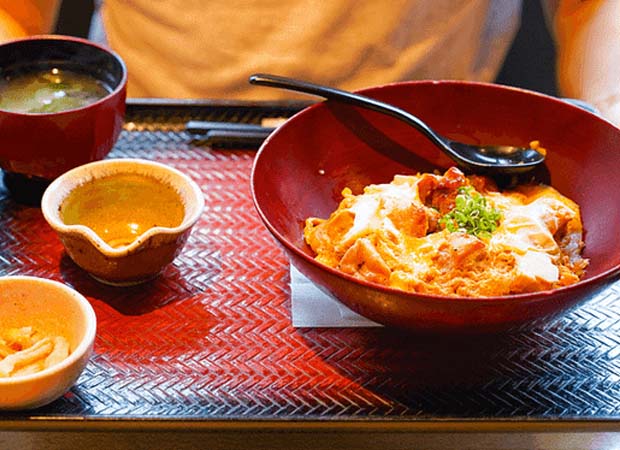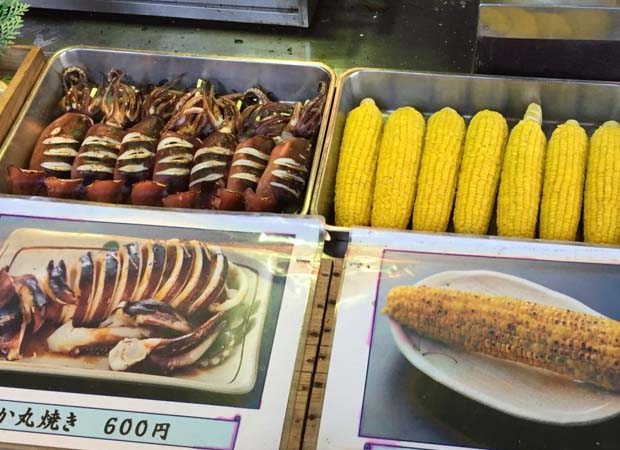
Why is Food So Cheap in Japan: Japan is known for its rich cultural heritage, technological advancements, and culinary delights. One of the most fascinating aspects for visitors and residents alike is food affordability, especially compared to the United States. In this blog post, we will explore the various reasons behind this phenomenon, delving into economic, cultural, and logistical factors that make food in Japan so accessible and affordable. So, why is food so cheap in Japan?
Economic Factors
When comparing the cost of food in Japan to the United States, several economic factors contribute to the relatively lower prices in Japan. One key factor is the efficient agricultural practices implemented in Japan, which enable higher yields and lower production costs.
1. Government Subsidies and Support
The Japanese government plays a significant role in supporting the agricultural sector. Through subsidies and various forms of financial support, the government ensures that farmers can produce food at lower costs. This support helps keep essential food items’ prices low, benefiting consumers.
2. Efficient Supply Chain
Japan boasts one of the most efficient supply chain systems in the world. The process is streamlined from farm to table, reducing wastage and costs. Advanced logistics and transportation networks ensure food reaches markets quickly and efficiently, maintaining freshness and affordability.
3. Scale and Production Techniques
Japanese agriculture often focuses on small-scale, intensive farming techniques that maximize yield from limited land resources. Innovations in farming technology and methods, such as hydroponics and vertical farming, contribute to higher productivity and lower costs.

Cultural Factors
Cultural factors play a significant role in understanding why food is cheaper in Japan than in the United States. One key aspect is Japanese society’s emphasis on efficiency and resourcefulness, which extends to the food industry. Japan’s focus on minimizing waste and utilizing local ingredients efficiently helps reduce production costs.
1. Food Culture and Preferences
Japanese culture values fresh, seasonal, and locally sourced ingredients. This cultural preference drives demand for local produce, supporting local farmers and reducing reliance on imported goods. Food remains affordable and high-quality by consuming what’s in season and grown nearby.
2. Minimal Waste Mentality
The Japanese have a deep-seated cultural inclination towards minimizing waste. This is evident in their approach to food consumption and production. Leftovers are creatively reused, and portions are generally smaller, reducing overall waste and costs.
Logistical Factors
Logistical factors play a crucial role in understanding why food is more affordable in Japan compared to the United States. One significant factor is Japan’s efficient and well-organized supply chain, which enables streamlined distribution and reduces transportation costs.
The effective coordination between producers, suppliers, and retailers ensures a smooth flow of goods, reducing overhead costs. These logistical factors contribute to the overall affordability of food in Japan in comparison to the United States.
1. Proximity to Food Sources
Japan’s geographic layout means that most urban areas are relatively close to rural farming regions. This proximity reduces transportation costs and time, ensuring fresh produce is readily available at lower prices.
2. Advanced Distribution Systems
The country’s sophisticated distribution networks ensure food is transported efficiently from farms to markets. Technologies such as temperature-controlled storage and transport help maintain the quality of perishable items, reducing spoilage and keeping prices low.
Comparative Analysis: Japan vs. the US
A comparative analysis of Japan and the US can help us understand why food is relatively cheaper in Japan. One key factor is the difference in labor costs; Japan’s labor costs are lower than the United States, reducing production expenses.
1. Agricultural Practices
In the US, large-scale industrial farming is the norm. While this allows for mass production, it also involves significant machinery, labor, and transportation costs. In contrast, Japan’s focus on smaller-scale, intensive farming reduces these overheads, lowering food prices.
2. Food Import Policies
The US imports a significant portion of its food, which can introduce additional costs related to tariffs, transportation, and storage. On the other hand, Japan has policies that encourage domestic production and consumption, reducing the need for expensive imports.
3. Retail Strategies
Japanese supermarkets and convenience stores operate on a high turnover model, where fresh products are stocked daily, and unsold items are quickly discounted. This practice ensures that food remains affordable and accessible, unlike in the US, where longer shelf life often precedes immediate freshness.
Economic Insights
Economic insights shed light on why Japan’s food is more affordable than the US’s. One crucial factor is Japan’s focus on local agriculture and self-sufficiency, which reduces reliance on imports and lowers prices. Japan’s economy is also heavily export-oriented, incentivizing efficiency and cost-reduction in all sectors, including food production. That’s Why is Food So Cheap in Japan.
1. Consumer Spending Patterns
Japanese consumers tend to prioritize quality and freshness over quantity. This spending pattern supports a market where fresh food is in constant demand, encouraging competitive pricing among retailers to attract customers.
2. Food Service Industry Dynamics
The food service industry in Japan, including restaurants and street vendors, often sources ingredients locally and seasonally. This practice keeps costs down and allows these businesses to offer meals at reasonable prices, further contributing to the perception that food is cheap in Japan.
Government Policies and Initiatives
Government policies and initiatives play a significant role in explaining why Japan’s food is more affordable than the US. Japan has implemented various measures to support its agricultural sector, such as subsidies, land reforms, and investment in research and development.
1. Agricultural Policy
Japan’s agricultural policy is designed to protect and support its farmers. Measures such as price controls, direct payments, and technical support help stabilize the farm sector, ensuring that food remains affordable for the general population that Why is Food So Cheap in Japan.
2. Import Regulations
While Japan does import certain food items, it imposes strict regulations to protect its domestic agriculture. These regulations help balance imported and locally produced food, keeping prices competitive and fair.

Technological Advancements
Technological advancements have contributed significantly to Japan’s lower food cost than the US. Japan has embraced automation and innovative farming techniques, such as vertical farming, hydroponics, and precision agriculture.
1. Innovation in Farming
Japan is at the forefront of agricultural technology. Innovations such as automated farming equipment, AI-driven crop management systems, and advanced irrigation techniques contribute to higher efficiency and lower production costs, passed on to consumers.
2. Food Preservation Techniques
Advanced food preservation and storage technologies ensure that perishable items maintain their quality longer. This reduces food spoilage and wastage, keeping prices low and food available.
Cultural Practices
Cultural practices contribute significantly to Japan’s lower food cost than the US. Japan has a strong culture of self-sufficiency and local food production, focusing on small-scale farming and community-supported agriculture. This localized approach reduces transportation and distribution costs, allowing for fresher and more affordable produce.
1. Community Farming
Community-supported agriculture (CSA) is a common practice in Japan, where consumers directly support local farmers by subscribing to regular deliveries of fresh produce. This direct-to-consumer model eliminates middlemen, reducing costs and ensuring farmers receive fair compensation.
2. Home Cooking
Home cooking is a significant aspect of Japanese culture. With a focus on preparing fresh, simple, and nutritious meals at home, there is a consistent demand for affordable, high-quality ingredients. This cultural norm supports a market where fresh food remains reasonably priced.
Societal Norms
Societal norms play a vital role in understanding why food is cheaper in Japan than in the US. In Japan, there is a strong emphasis on efficiency, waste reduction, and sustainable practices throughout the food supply chain. The cultural value placed on minimizing food waste and utilizing local resources fosters a more cost-effective food production and distribution approach.
1. Eating Out vs. Eating In
While eating out is common in Japan, it is typically more affordable than in the US due to lower labor costs and efficient restaurant operations. Additionally, the high frequency of eating at home supports a market for fresh, affordable ingredients.
2. Portion Sizes
Portion sizes in Japan tend to be smaller than in the US. This promotes healthier eating habits, reduces food costs for consumers, and decreases waste for retailers and restaurants.
Environmental Considerations
Environmental considerations are a significant factor in explaining why food is cheaper in Japan compared to the US. Japan’s geography and natural environment have necessitated a localized approach to food production, focusing on sustainable and environmentally friendly practices.
1. Sustainable Practices
Japanese agriculture often incorporates sustainable practices that enhance productivity while minimizing environmental impact. These practices include organic farming, integrated pest management, and crop rotation, which help keep production costs low and food prices affordable.
2. Urban Farming
Urban farming initiatives like rooftop and community gardens are increasingly popular in Japan. These projects contribute to local food production, reduce transportation costs, and provide fresh produce at lower prices.
Conclusion: Why is Food So Cheap in Japan?
Why is Food So Cheap in Japan; The food affordability in Japan compared to the US results from a combination of economic, cultural, and logistical factors. Government support, efficient supply chains, advanced farming techniques, cultural preferences for fresh and local produce, and innovative technologies are crucial in keeping food prices low. Additionally, societal norms such as minimal waste, home cooking, and community farming further support a market where high-quality food remains accessible and affordable.
Understanding why food is so cheap in Japan provides valuable insights into the interplay between policy, culture, and technology. It highlights the potential benefits of adopting similar practices and innovations in other parts of the world, aiming to create a more sustainable and affordable food system globally.
2 thoughts on “Why is Food So Cheap in Japan Compared to US?”
Comments are closed.